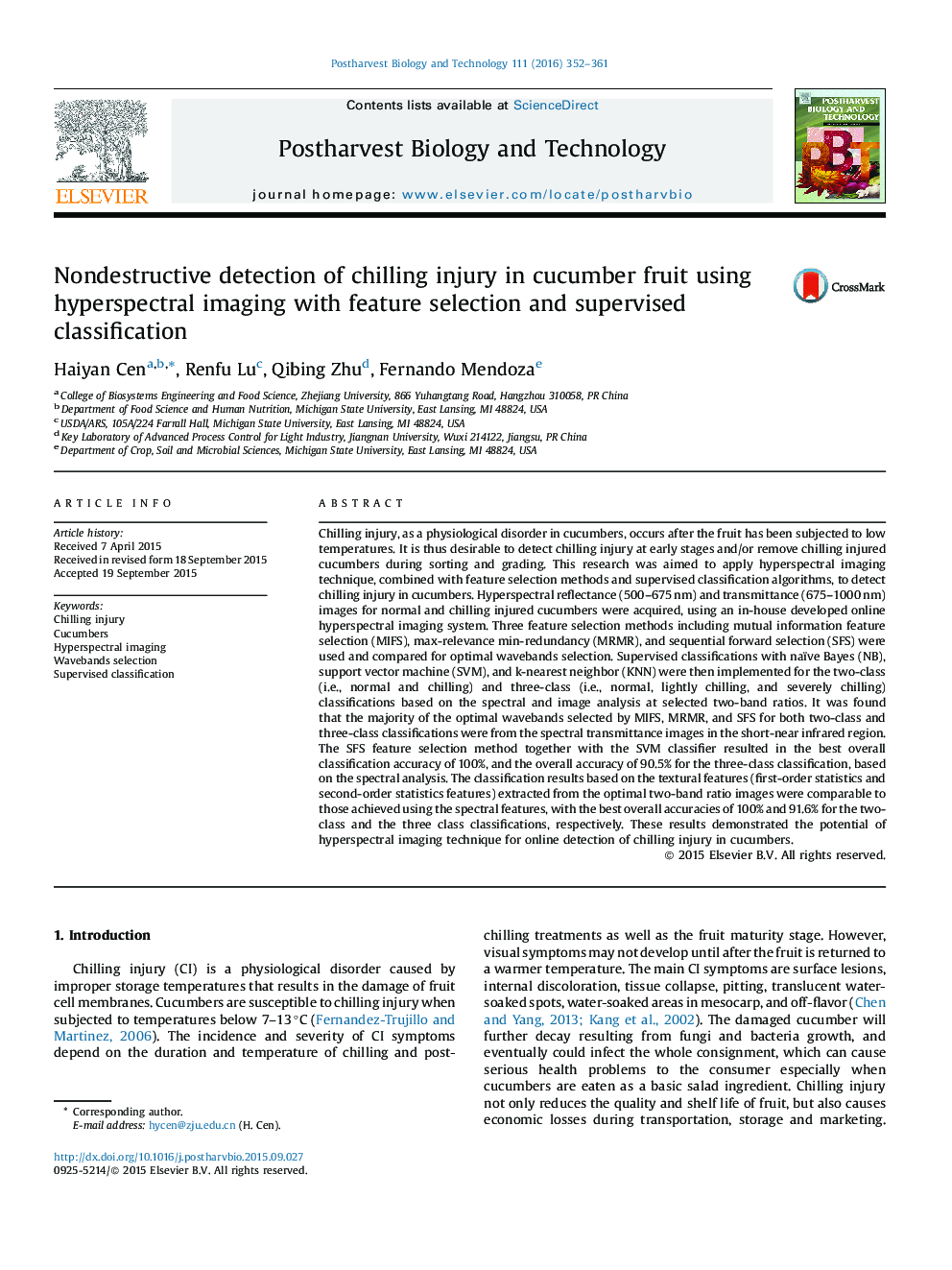| کد مقاله | کد نشریه | سال انتشار | مقاله انگلیسی | نسخه تمام متن |
|---|---|---|---|---|
| 4517891 | 1624983 | 2016 | 10 صفحه PDF | دانلود رایگان |
• Hyperspectral images for normal and chilling injured cucumbers were acquired.
• Two-class and three-class classifications were performed.
• Feature selection methods combined with supervised classifications were used.
• Sequential forward selection with support vector machine yielded the best results.
• Overall accuracies for two-class and three-classifications were 100% and 91.6%.
Chilling injury, as a physiological disorder in cucumbers, occurs after the fruit has been subjected to low temperatures. It is thus desirable to detect chilling injury at early stages and/or remove chilling injured cucumbers during sorting and grading. This research was aimed to apply hyperspectral imaging technique, combined with feature selection methods and supervised classification algorithms, to detect chilling injury in cucumbers. Hyperspectral reflectance (500–675 nm) and transmittance (675–1000 nm) images for normal and chilling injured cucumbers were acquired, using an in-house developed online hyperspectral imaging system. Three feature selection methods including mutual information feature selection (MIFS), max-relevance min-redundancy (MRMR), and sequential forward selection (SFS) were used and compared for optimal wavebands selection. Supervised classifications with naïve Bayes (NB), support vector machine (SVM), and k-nearest neighbor (KNN) were then implemented for the two-class (i.e., normal and chilling) and three-class (i.e., normal, lightly chilling, and severely chilling) classifications based on the spectral and image analysis at selected two-band ratios. It was found that the majority of the optimal wavebands selected by MIFS, MRMR, and SFS for both two-class and three-class classifications were from the spectral transmittance images in the short-near infrared region. The SFS feature selection method together with the SVM classifier resulted in the best overall classification accuracy of 100%, and the overall accuracy of 90.5% for the three-class classification, based on the spectral analysis. The classification results based on the textural features (first-order statistics and second-order statistics features) extracted from the optimal two-band ratio images were comparable to those achieved using the spectral features, with the best overall accuracies of 100% and 91.6% for the two-class and the three class classifications, respectively. These results demonstrated the potential of hyperspectral imaging technique for online detection of chilling injury in cucumbers.
Journal: Postharvest Biology and Technology - Volume 111, January 2016, Pages 352–361
